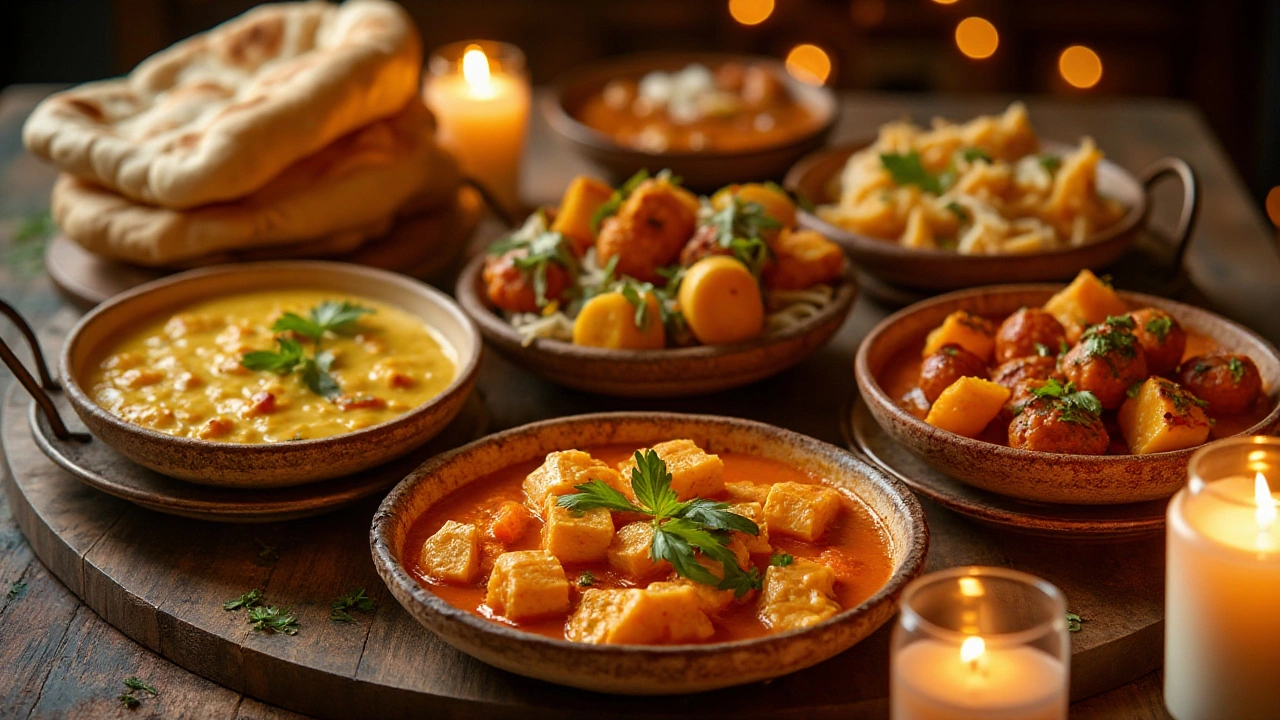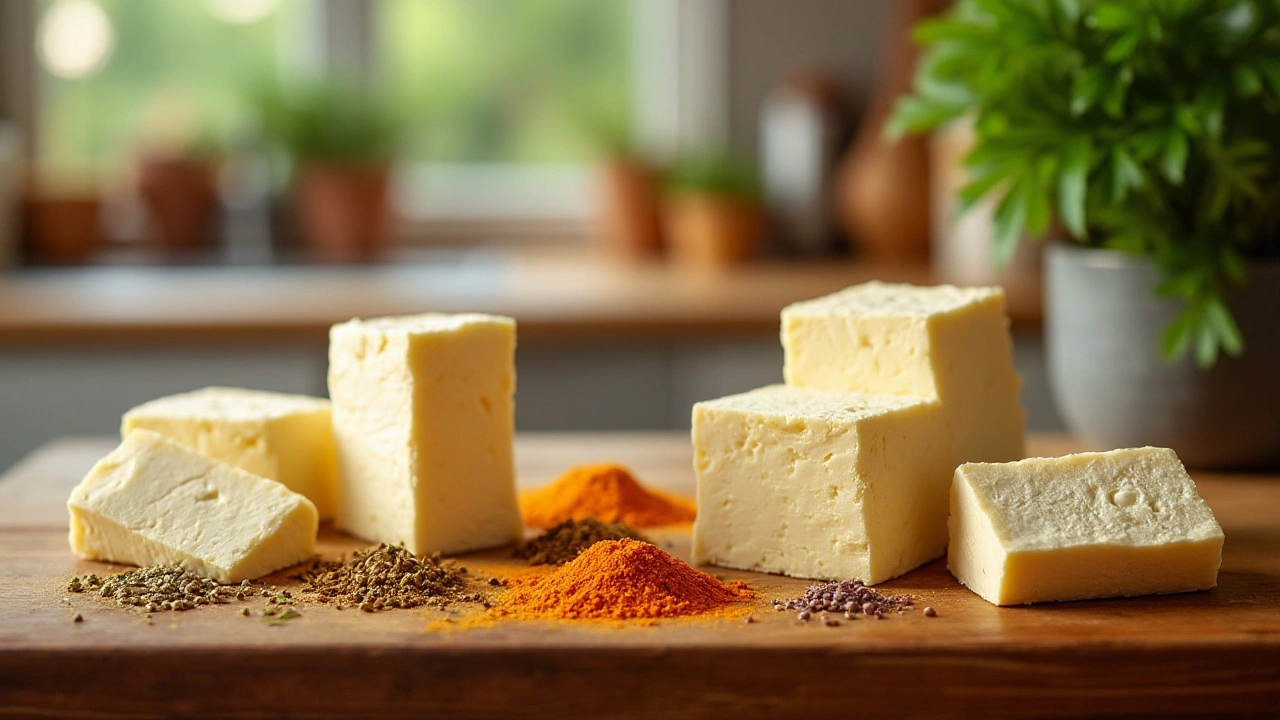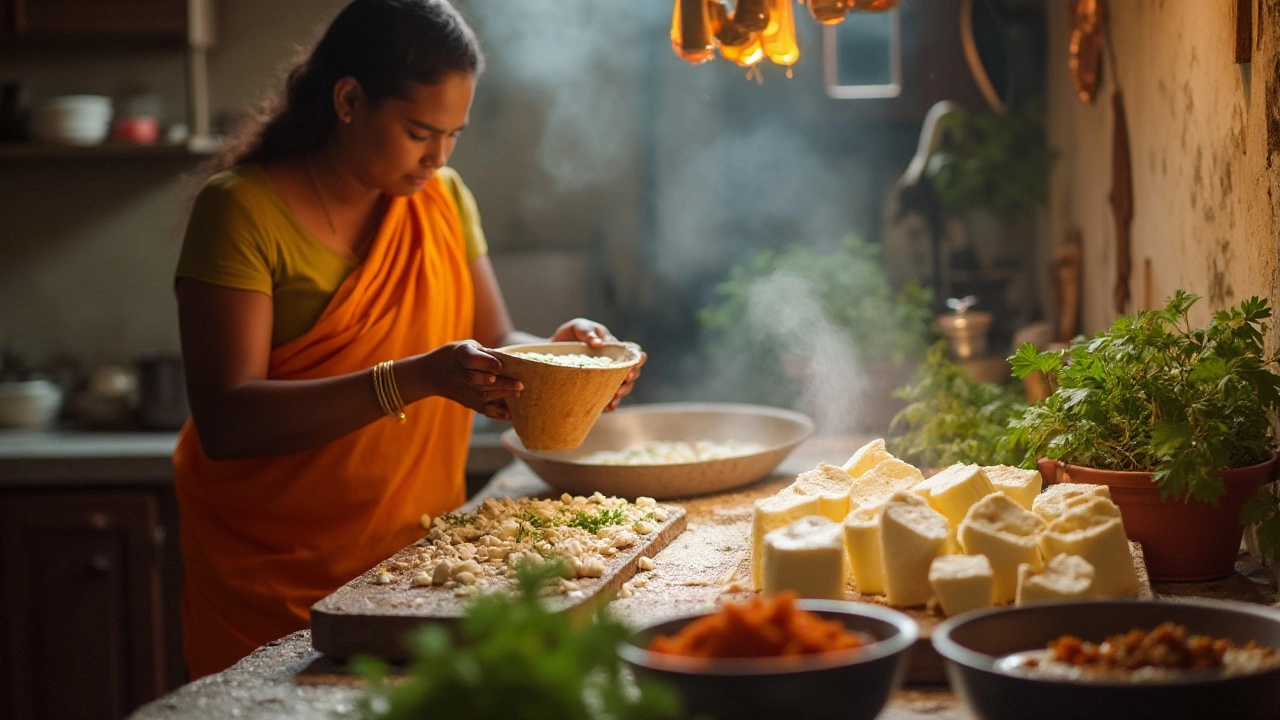The culinary debate between paneer and tofu has a delightful way of sparking conversations in kitchens across the globe. While both are adored for their versatility and ease of preparation, they each bring something uniquely different to the dining table. Paneer, a staple in Indian kitchens, is cherished for its creamy softness and ability to soak up rich spices. Tofu, on the other hand, is revered in many Asian cuisines for its subtle flavor profile and high protein content.
Embark on a tasty journey as we explore these two beloved choices. From their cultural backgrounds to their nutritional benefits, we will dive deep into what makes each of them special. Plus, get ready to roll up your sleeves as we share tips for making your own homemade paneer, a rewarding and fun process that brings the freshest flavors right to your plate.
- Origins and Cultural Significance
- Texture and Flavor Comparison
- Nutritional Differences
- Homemade Paneer Tips
Origins and Cultural Significance
Exploring the origins of paneer and tofu unravels a fascinating tapestry of cultural and culinary history that spans across continents. Paneer, though often perceived as quintessentially Indian, has intriguing traces back to Persian and Afghan influences. It is believed that soft cheeses, akin to paneer, were introduced to India by Persian and Afghan invaders around the 16th century. Over centuries, paneer became woven into the fabric of Indian cuisine, beloved for its versatility and the way it soaks up the rich spices iconic to the region. As a non-melting cheese, it fits perfectly into curries and desserts alike, winning hearts across the diverse tapestry of flavors found in India.
Tofu, on the other hand, finds its roots in ancient China, with its history dating back over two thousand years. According to legend, a Chinese cook discovered it quite by accident—curdling soy milk with nigari, a coagulant extracted from sea salt. Through the centuries, this humble soybean product has traveled across Asia and beyond. Its adaptability made it a prime candidate for use in vegetarian and vegan diets, particularly in Japan and Korea, where light, umami-infused dishes thrive. Unlike paneer, tofu offers a wide spectrum of varieties, from silken to extra firm, each with its culinary use and texture to match. Notably, tofu's rise in popularity is significantly tied to the cultural exchange between the East and the West, particularly through the expansion of Asian cuisine across the globe.
Both these versatile cheeses hold special places within their cultural contexts, yet their rising global popularity attests to their universal appeal. While paneer remains a staple in Indian households and festivals, often prepared fresh at home and used in celebratory recipes, tofu continues to be a dietary staple in many East and Southeast Asian cultures. It's revered not only as a protein source but also as an embodiment of simplicity and health. As Susan Feniger, a well-known chef and restaurateur, remarks:
"Tofu's ability to adapt to the flavors surrounding it makes it an artist's palette in culinary creations."Such sentiments bridge the gap between history and modern usage, illuminating how deeply rooted culinary traditions can expand and adapt to contemporary tastes. Both paneer and tofu highlight how regions have shaped these ingredients while these very foods have also defined cultural identities, proving that food is as much about history as it is about sustenance.

Texture and Flavor Comparison
When it comes to comparing the textures and flavors of paneer and tofu, the two couldn't be more different, despite often being used as substitutes for each other in various recipes. The first thing you'll notice about paneer is its delightful softness that feels like a creamy, moist heaven when you take a bite. It's a type of fresh cheese that doesn't melt, making it perfect for frying or grilling without losing its shape. Its slightly chewy texture adds an enjoyable mouthfeel to dishes, from curries to kebabs. This is part of the reason why it's a cherished ingredient in Indian cuisine.
Paneer's flavor is mild and milky, which allows it to absorb the spices and sauces it’s cooked in seamlessly. It serves as a blank canvas, highlighting the vivid spices of Indian curries like matar paneer or palak paneer. On the other hand, tofu boasts a different kind of adaptability. Made from soy milk, tofu offers a subtle nutty taste that can enhance the flavors of the ingredients it is combined with, whether that’s soy sauce in stir-fry dishes or ginger and garlic in broths.
Tofu is notably softer and somewhat gelatinous, ideal for soaking in flavors while retaining its silky texture. There are several types of tofu: silken, firm, and extra firm, each bringing a different level of softness or rigidity depending on the cooking method. As renowned chef Yotam Ottolenghi once said in an interview, “Tofu is often misunderstood; it’s not about what it is, but what you do with it.” His words resonate with those looking to master culinary arts using this versatile ingredient.
Let's delve into a few specifics. For texture lovers wanting a hearty experience, paneer is the go-to choice thanks to its ability to hold up well under heat. But if you’re after something that melds with your dish’s flavors while adding a smooth consistency, tofu can be remarkably accommodating. It's perfect for vegans and those sensitive to lactose, thanks to its plant-based origins. To sum it up with some statistics, while paneer packs a punch in terms of dietary calcium, tofu serves as a great source of plant-based protein, making it a popular choice for health-conscious individuals.
| Attribute | Paneer | Tofu |
|---|---|---|
| Origins | India | China |
| Main Ingredient | Milk | Soybeans |
| Texture | Chewy and firm | Soft to firm |
| Taste | Mild and creamy | Slightly nutty |
Ultimately, the choice between these two often boils down to personal preference and dietary needs. Experimenting in the kitchen with both of these options could lead to delightful discoveries, as you get to experience the unique ways in which they can enhance your culinary creations.

Nutritional Differences
When diving into the nutritional profiles of paneer and tofu, it's clear that each brings its own set of health benefits, catering to diverse dietary preferences. Paneer, originating from South Asia, is known for its rich creaminess and high calcium content. It is a significant source of protein for vegetarians, offering a substantial amount of healthy fats. However, it does come with a higher calorie count than tofu, a factor worth noting for those keeping a close eye on their caloric intake. On the other hand, tofu, which hails from East Asia and is a staple in many Chinese and Japanese dishes, provides a leaner alternative with its lower fat content. Tofu is made from soybeans, making it an excellent option for vegans and those avoiding dairy. It's rich in iron and can be fortified with additional nutrients, like vitamin B12 and vitamin D, often lacking in plant-based diets.
An often-quoted pearl of wisdom from nutrition expert Dr. Sudha Sharma reminds us,
"Choosing between paneer and tofu depends not only on personal taste but also on nutritional needs. Look at your broader dietary requirements, and select the one that complements your lifestyle."The protein content in tofu is commendable, though it varies slightly between varieties, such as firm, silken, and extra firm. For instance, a half-cup serving of firm tofu typically contains about 10 grams of protein, while the same serving of paneer can offer nearly the same, though with more fats. For individuals prioritizing heart health, tofu's ability to lower LDL cholesterol due to its soy isoflavones is a notable benefit. This aspect can make tofu particularly appealing for those managing cardiovascular concerns. Moreover, tofu can be a valuable source of omega-3 fatty acids when made with enriched soybean oils. In contrast, paneer serves as a respected source of vitamin A, which assists in bolstering the immune system and maintaining good vision. When considering sodium intake, tofu often scores better, particularly when opting for unsalted or lightly salted versions.
Below is a simple comparison of some essential nutritional elements in a serving of paneer and tofu.
| Element | Paneer (100g) | Tofu (100g) |
|---|---|---|
| Calories | 265 | 76 |
| Protein (grams) | 18 | 8 |
| Fat (grams) | 21 | 4.8 |
| Calcium (%) | 20% | 15% |
As dietary trends evolve, so do the uses of both paneer and tofu in diverse nutritional plans. Athletes might lean towards paneer's higher protein-fuelled energy demands, whereas tofu stands out in weight management diets for its lower calorie density. Knowing the nutritional breakdowns is crucial in well-informed dietary decisions. Both options stand strong in their ability to satisfy our palates and nutritional requirements, offering room for versatility and creativity in everyday meals.

Homemade Paneer Tips
Making homemade paneer can be an incredibly rewarding endeavor, allowing you to control what goes into your food and ensuring the freshest taste. If you’ve never tried it before, you'll be surprised to find that paneer only requires a handful of ingredients, which are likely already in your kitchen. To start, all you need is some whole milk, lemon juice or vinegar, and a bit of patience. The first step in the process is bringing the milk to a boil. Depending on your preferred texture, you can experiment with cow’s milk, buffalo milk, or a blend of both for creamier results. A typical ratio is about a liter of milk to three tablespoons of lemon juice, but this can vary based on your taste preference.
Once the milk is boiling, add the acidic agent slowly while stirring continuously. You will notice the milk beginning to curdle as the solids separate from the whey. This is when the magic happens, and you begin to see the formation of curds that define paneer. After a few minutes of gentle simmering, the curdling process should be complete. It’s essential to strain these curds through a fine cheesecloth to remove excess whey. For those looking to boost the paneer's flavor, adding herbs or spices at this stage can create a distinct taste profile, such as cilantro, chili, or cumin.
"Paneer is best enjoyed fresh and can easily be adapted to various dishes from light salads to hearty curries," says culinary expert Madhur Jaffrey, a well-respected authority in Indian cooking.
After straining, the curds are then wrapped tightly in the cloth and pressed under a weight to ensure a firmer texture, typically for about an hour. This step is crucial as it defines the final consistency of your paneer. Once pressed, unwrap the cheesecloth and cut the paneer into cubes, slices, or any shape that fits your intended dish. Storing freshly-made paneer is straightforward; it can be refrigerated for up to two days, though its versatile nature often means it doesn’t last that long! When you're crafting paneer at home, remember there's room to get creative with squares that simmer in sauce or crumbles to top a salad. And if you're environmentally conscious, don't waste the leftover whey – it can be used in soups, breads, or as a fortifying drink.
For newcomers, these steps provide a glimpse into the art and science of making paneer, a process that aligns with an age-old tradition but remains relevant in today’s kitchen. In a surprisingly short span, homemade paneer can elevate a meal from everyday to exceptional. Adding this skill to your culinary repertoire means you will always have a delicious, source of protein at your fingertips, inviting experimentation in various cuisines that love to embrace paneer as an ingredient.
